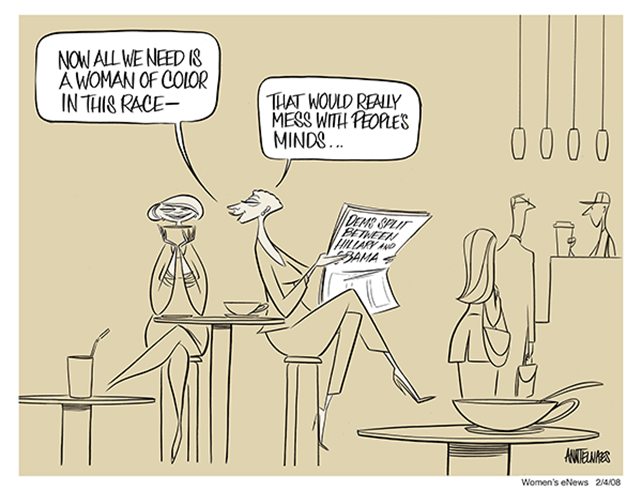Gender and race in Kamala Harris’s defeat. A cross-state analysis of U.S. 2024 presidential election

Published 2025-05-19
Keywords
- US Presidential Election,
- Gender,
- Race,
- Cross-State Analysis
How to Cite
Copyright (c) 2025 Marco Giuliani

This work is licensed under a Creative Commons Attribution 4.0 International License.
Abstract
This research note employs aggregate State level data to analyze the results of the 2024 US presidential election, and to explore the role played by gender and race in Kamala Harris’s defeat. The Democratic party failed to capitalize on the characteristics of its presidential candidate and, compared to Biden’s election, to expand its support in states with larger female and African American electorates, and faced systematic losses in those with more Hispanic voters. This note contributes to a cumulative macro-micro approach to the analysis of election results, and thus to overcoming both ecological and micrological fallacies.
References
- AA.VV. (2024). Changing Partisan Coalitions in a Politically Divided Nation.Washington D.C.: Pew Research Center, 9 April 2024
- Alrababa’h, A., Williamson, S., Dillon, A., Hainmueller, J., Hangartner, D., Hotard, M., Laitin, D. D., Lawrence, D., & Weinstein, J. (2023). Learning from Null Effects: A Bottom-Up Approach. Political Analysis, 31(3), 448 - 456.
- Anderson, K. V. (2017). Every Woman Is the Wrong Woman: The Female Presidentiality Paradox. Women's Studies in Communication, 40(2), 132-135.
- Carmines, E. G., & Schmidt, E. R. (2021). Prejudice and Tolerance in US Presidential Politics: Evidence from Eight List Experiments in 2008 and 2012. PS: Political Science & Politics, 54(1), 24-32.
- Carroll, S. J., & Fox, R. L. (Eds.). (2018). Gender and Elections: Shaping the Future of American Politics. Cambridge: Cambridge University Press.
- Dahlgaard, J. O., Hansen, J. H., Hansen, K. M., & Bhatti, Y. (2019). Bias in Self-reported Voting and How it Distorts Turnout Models: Disentangling Nonresponse Bias and Overreporting Among Danish Voters. Political Analysis, 27(4), 590-598.
- Dassonneville, R., & Lewis-Beck, M. S. (2014). Macroeconomics, economic crisis and electoral outcomes: A national European pool. Acta Politica, 49(4), 372-394.
- Filindra, A., & Fagan, E. J. (2022). Black, immigrant, or woman? The implicit influence of Kamala Harris’ vice presidential nomination on support for Biden in 2020. Social Science Quarterly, 103(4), 892-906.
- Gelman, A. (2014). How Bayesian Analysis Cracked the Red-State, Blue-State Problem. Statistical Science, 29(1).
- Gelman, A., Park, D., Shor, B., & Cortina, J. (2010). Red State, Blue State, Rich State, Poor State. Why Americans vote the way they do. Princeton: Princeton University Press.
- Glick, P. (2019). Gender, sexism, and the election: did sexism help Trump more than it hurt Clinton? Politics, Groups, and Identities, 7(3), 713-723.
- Grose, C. R., Husser, J., & Yoshinaka, A. (2010). Plus ça Change: Race, Gender, and Issue Retrospections in the 2008 US Presidential Election. Journal of Elections, Public Opinion and Parties, 20(2), 187-211.
- Hardy-Fanta, C., Lien, P.-t., Pinderhughes, D., & Sierra, C. M. (2016). Contested Transformation. Race, Gender, and Political Leadership in 21st Century America. Cambridge: Cambridge University Press.
- Hilton, A. (2021). True Blues. The Contentious Transformation of the Democratic Party. Philadelphia: The University of Pennsylvania Press.
- Igielnik, R., Keeter, S., & Hartig, H. (2021). Behind Biden’s 2020 Victory. An examination of the 2020 electorate, based on validated voters.Washington D.C.: Pew Research Center,
- Jalalzai, F. (2013). Shattered, Cracked, or Firmly Intact? Women and the Executive Glass Ceiling Worldwide. Oxford: Oxford University Press.
- Kinder, D., & Chudy, J. (2016). After Obama. The Forum, 14(1), 3-15.
- Kramer, G. H. (1983). The Ecological Fallacy Revisited: Aggregate- versus Individual-level Findings on Economics and Elections, and Sociotropic Voting. The American Political Science Review, 77(1), 92-111.
- Lewis-Beck, M. S., & Stegmaier, M. (2013). The VP-function revisited: a survey of the literature on vote and popularity functions after over 40 years. Public Choice, 157(3-4), 367-385.
- Mason, L., Wronski, J., & Kane, J. V. (2021). Activating Animus: The Uniquely Social Roots of Trump Support. American Political Science Review, 115(4), 1508-1516.
- Moncrief, G., Thompson, J., & Schuhmann, R. (1991). Gender, race, and the state legislature: A research note on the double disadvantage hypothesis. The Social Science Journal, 28(4), 481–487.
- Nannestad, P., & Paldam, M. (1994). The VP-function. A survey of the literature on vote and popularity functions after 25 years. Public Choice, 79(3-4), 213-245.
- Ono, Y., & Burden, B. C. (2019). The Contingent Effects of Candidate Sex on Voter Choice. Political Behavior, 41(3), 583-607.
- Robinson, W. S. (1950). Ecological correlations and the behavior of individuals. American Sociological Review, 15(3), 351–357.
- Sciarini, P., & Goldberg, A. C. (2017). Lost on the Way: Nonresponse and its Influence on Turnout Bias in Postelection Surveys. International Journal of Public Opinion Research, 29(2), 291-315.
- Selb, P., & Munzert, S. (2013). Voter overrepresentation, vote misreporting, and turnout bias in postelection surveys. Electoral Studies, 32(1), 186-196.
- Smooth, W. G. (2018). African American Women and Electoral Politics. The Core of the New American Electorate. In S. J. Carroll & R. L. Fox (Eds.), Gender and Elections: Shaping the Future of American Politics (pp. 171-197). Cambridge: Cambridge University Press.
- Thomas, K. J. A., & Tesfai, R. (2019). Race, Ethnicity, the Political Incorporation of Black Immigrants: an Examination of Evidence from Presidential Elections Won by Barack Obama. Journal of International Migration and Integration, 20(1), 101-120.
- van Witteloostuijn, A., & van Hugten, J. (2022). The state of the art of hypothesis testing in the social sciences. Social Sciences & Humanities Open, 6(1).
- Zacher, S. (2024). Polarization of the Rich: The New Democratic Allegiance of Affluent Americans and the Politics of Redistribution. Perspectives on Politics, 22(2), 338-356.

